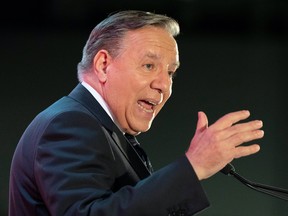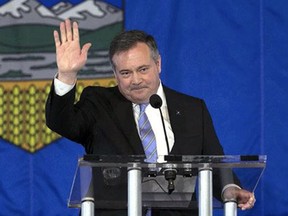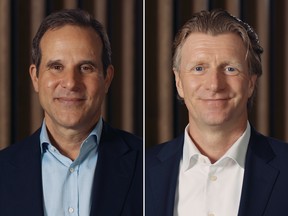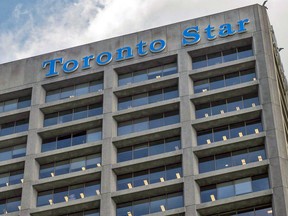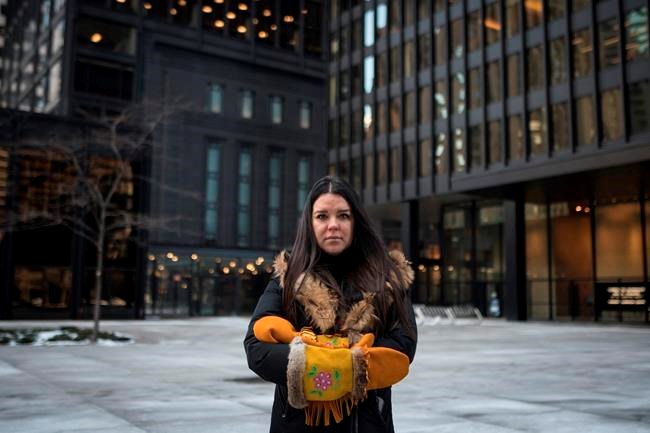Anna Conkling
Fri, September 30, 2022

Photo Illustration by Luis G. Rendon/The Daily Beast/Getty
A network of two dozen organizations has been tasked with the critical role of helping Ukrainians who claim to have been sexually assaulted by Russian soldiers since the start of Vladimir Putin’s devastating war in Ukraine.
The network operates throughout the country, often in some of the war’s most dangerous hotspots, and offers anonymous support to anyone who requests help, ranging from sending rape kits to Russian-occupied villages to providing trauma support to survivors of sexual violence.
“We obtain information about alleged human rights violations including conflict-related sexual violence through a variety of sources,” a spokesperson for the UN’s Human Rights Mission in Ukraine told The Daily Beast. Once the sources are verified, they gather all of the information they have received and use a “reasonable grounds to believe” standard of proof which, if it meets all of the elements of sexual violence, will be recorded.
Despite the intricate system created by these organization, the number of “verified cases” of sexual violence in the Ukraine war stands at just 43 assaults, 20 of which were reportedly against women or girls, with 23 against men. The number is staggeringly low, and inside Ukraine, the network believes that the true number of rape survivors is likely to be much higher, given that in conflict zones only one in every 10 to 20 rapes are reported.
‘They’ll Give Me a Medal’: The Dark Reality of Russian Troops’ Alleged War-Crime Rapes
Each member of the network plays a different role, and in the early days of the war, one those networks, La Strada Ukraine, established two national hotlines for people to call with reports of possible human trafficking. Since then, the NGO has received calls relating to women, men, and children who have been sexually assaulted by civilians and members of the Russian military. The exact number of people La Strada has helped is unknown, but it receives reports of sexual assault every day.
“[It’s] not limited to rape. It also can take many other forms. Sexual exploitation also takes place because of heightened vulnerability of these women,” Yuilia Ansova, a lawyer for La Strada, told The Daily Beast in an interview.
Recently, La Strada received a call about a 17-year-old girl in foster care who went missing while crossing from Ukraine to Poland alone. The girl had been in touch with her foster family before leaving Ukraine and was supposed to meet a volunteer from Poland to ensure her safe arrival. She has not been heard from since. Ansova said that there is no way to know what happened to her, but there is a possibility that she was a victim of sex trafficking. Since La Strada works anonymously, there is no way to follow up to try to find any new information about the girl.
When speaking with survivors of sexual abuse is possible, another network, Sylini Ukraine, works to cover their medical expenses. Sylini works with victims who remain anonymous and, since the beginning of the war, has funded the cost of recovery for eight women, including dental surgery, STD tests, psychological support, and in some cases, abortions.

Volunteers examine the remnants of a shell explosion in the town of Staryy Saltiv, Kharkiv region.
Anadolu Agency/Getty
The number of requests from survivors has grown in recent months. From May to June, 18 survivors of rape reached out to Sylini for help. Some wanted help covering medical costs, while others just wanted to ask questions, often disappearing once their questions are answered. Sylini might not hear from them again, but if the organization is needed, it is ready to help.
“It’s extremely important to give people information and to remind them that it’s OK if you’re not ready to get help,” Anastasia Krasnoplakhtych, a representative of Sylini Ukraine, told The Daily Beast over Zoom. “People want to forget about this crime, and they want to rebuild their lives. A lot of people who write to us ask, ‘Can you help me with some issue?’ and then they disappear.”
While there is no specific demographic of people Sylini helps, they often receive an influx of requests from territories liberated from Russian occupation. Younger survivors are more likely to choose psychological help over medical, whereas older survivors are more focused on getting rid of all physical evidence of their assault than on speaking with a psychologist.
“People [who] have experienced sexual violence shouldn’t be expected to behave in a way that is typical, or the same for everyone. So someone can be very aggressive, other people can freeze and not be ready to contact at all, and others can cry,” Krasnoplakhtych said.
“But the responses of people who have experienced sexual violence depend on a person’s mental state before sexual abuse, on their age, or past experience of sexual violence in their life,” she added.
Along with financial support and resources set up to support survivors, some NGO workers drive to the homes of survivors in Russian-occupied territories, where communication is scarce. That includes members of SEMA Ukraine, a group made up of survivors of sexual violence, some of whom were assaulted by Russian troops in Crimea in 2014.
SEMA could not be reached directly for comment, but its partner, The International Council of Polish Women+, has worked closely with SEMA, documenting each instance where rape could have been used as a war crime. When SEMA is able to visit small villages on the outskirts of Kyiv, it will often count at least three cases of rape. In the war’s hotspots, such as Bucha and Mariupol, the number is usually much higher.
“They [SEMA] are traveling to small towns themselves, using their own money to meet victims in person and counsel them,” Agnieszka Rutkowska, a member of The International Council of Polish Women+, told The Daily Beast. While women are a primary target of sexual violence in Ukraine, Rutkowska said that the network is aware of instances where men and children are victims as well, though they are often less reported.

Local residents evacuate and cross the bridge over the Oskil River in Kupiansk, in the recently retaken area near Kharkiv.
Yasuyoshi Chiba/AFP via Getty
The network also offers help and advice to survivors of rape who are now pregnant, including the option of abortion. In the midst of having their homes destroyed, losing loved ones, and being sexually assaulted, survivors must not only process the trauma of the assault but also deal with the physical aftermath. Many of those survivors have fled to Poland for safety, but when they arrive, they are met with some of the strictest abortion laws in the European Union.
In January 2021, Poland’s Constitutional Tribune banned access to abortions in almost all circumstances, except when someone has been raped or their life is at risk. But establishing that a rape has taken place takes time, and abortions are only allowed in the first 12 weeks of pregnancy. As a result, only 1,000 legal abortions take place in Poland each year. “Imagine the level of stress that the woman is going through during those few weeks of uncertainty, and she might change her mind several times,” said Rutkowska.
“I think the problem is that Ukrainian women hadn’t expected what they saw when they came to Poland—that they couldn’t have had abortion as they could have in Ukraine,” she added.
In an attempt to get a legal abortion, some Ukrainian refugees have been forced to travel to other European Union countries to terminate a pregnancy. The journey has made some pro-choice activists draw comparisons between abortion access in Europe and the “Post Roe” era in the U.S., where the Supreme Court recently overturned the constitutional right to abortion.
It’s Official: The Supreme Court Has Overturned Roe v. Wade
At the beginning of the war, a Ukrainian woman emailed Cocia Basia, an abortion access group in Berlin made up of Polish-speaking volunteers. The woman said she had just lost her husband and her home in Russia’s invasion. She was pregnant and needed an abortion. “I don’t have a house, I cannot keep this pregnancy,” she wrote, according to Ciocia Basia member Zuzanna Dziuban, who had been reduced to tears after reading the email.
Abortions are technically illegal in Germany, but they can be administered under certain circumstances in the first 12 weeks of pregnancy at doctors’ clinics. Dziuban estimates that Ciocia Basia and its partners have helped at least 500 pregnant people coming from Ukraine get an abortion since March.
“It’s incredibly infuriating because abortion bans are closely associated with stigma, with people doing it in secrecy not being very often not being aware of the fact that they cannot be criminalized for having their own abortions,” Dziuban told The Daily Beast. “They’re often alone when doing this… We didn’t think that [this] still exists in 2022. We have to stay alert. The U.S. shows how easy it is to take things from us that we fought for such a long time, and Poland also shows us how easily those rights can be taken away from us.”




